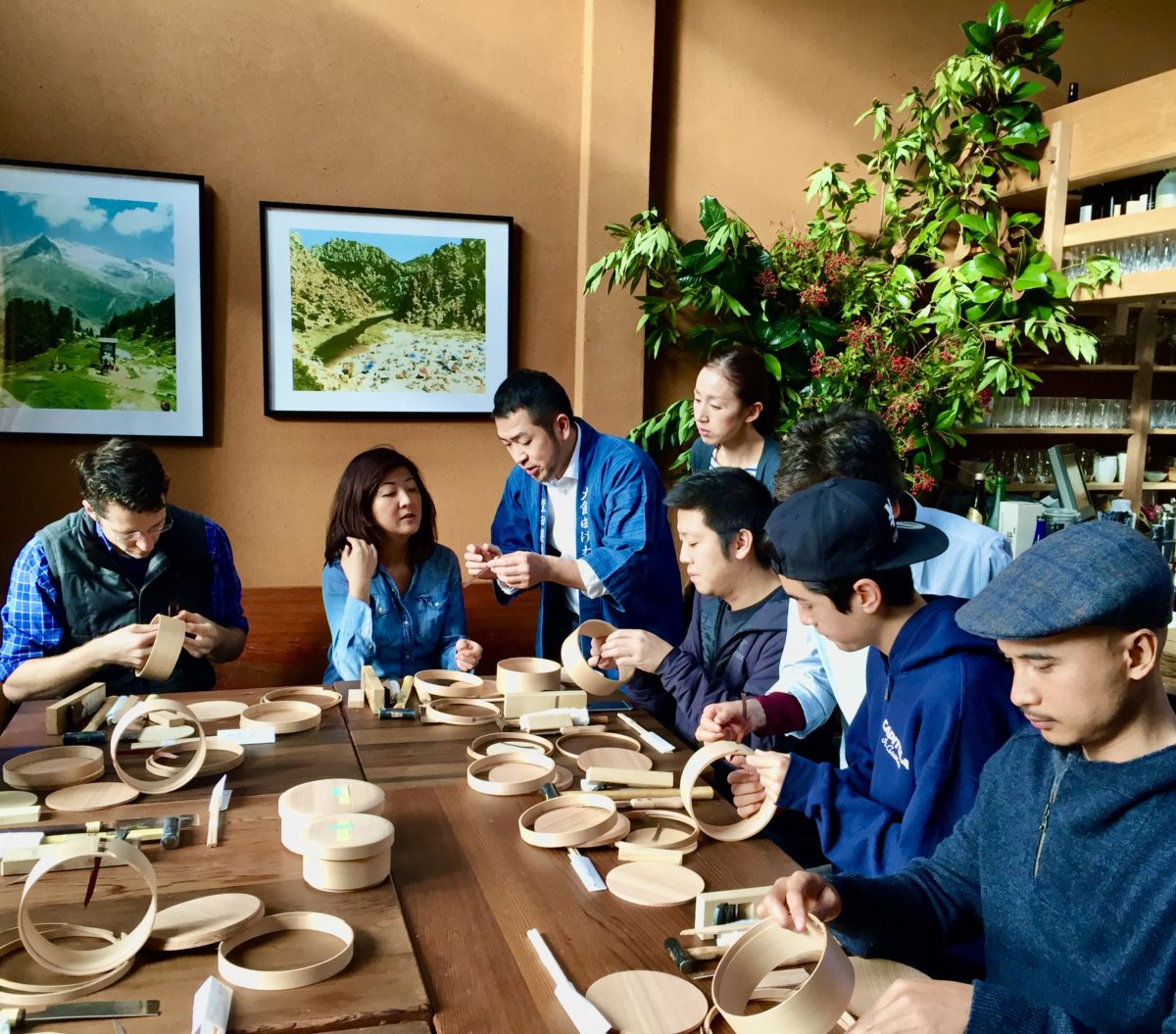
Magewappa was created over 400 years ago in Odate City of Akita prefecture in Japan, though the art itself began during the Edo era (1603-1868). Originally, the purpose was for lunch boxes. They are always made from high quality Japanese cedar wood. The aroma of cedar is said to go well with food. The properties of cedar allow for the food to breath, enabling the rice (common as the main accompaniment in Japanese lunches) to remain light and fluffy and the other foods to avoid becoming soggy within the box. Cedar itself is very lightweight which makes carrying ones lunch very convenient.

Yoshinobu Shibata (father) and Yoshimasa Shibata (son) are from Odate, Akita in northern Japan. Strips of Japanese Cedar are cut to specific lengths and then soaked in hot water allowing for it to become malleable into it’s desired shape. It is shaped around a form and pinned into place with a wooden pin and left to dry. A small piece of cherry wood is inserted as a join for the ends; it can be also be a form of decoration. The round cedar bottom is formed and glued onto a cylindrical form and hammered into place. It is then hand dried and finished. The lid is created similarly.
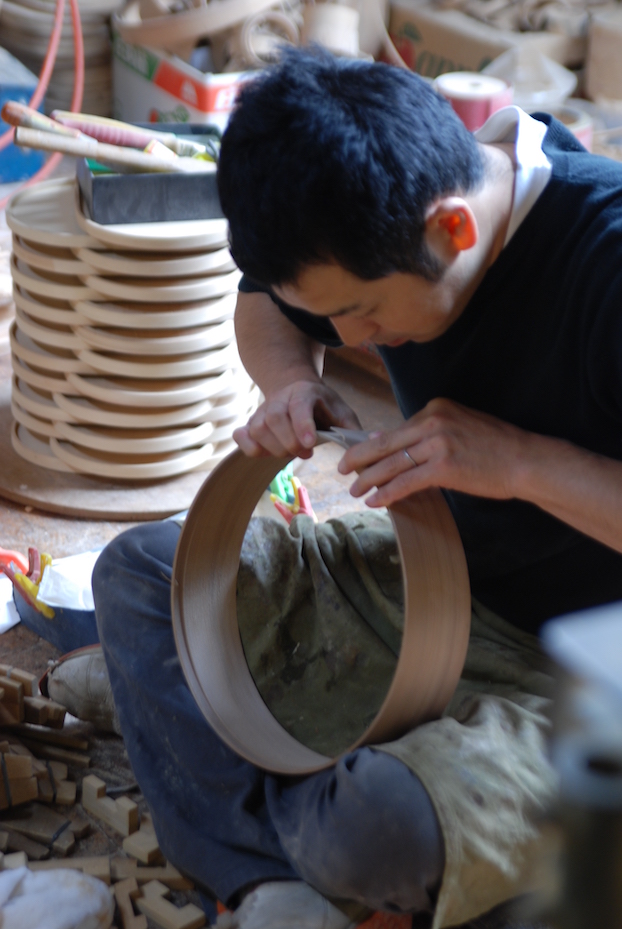
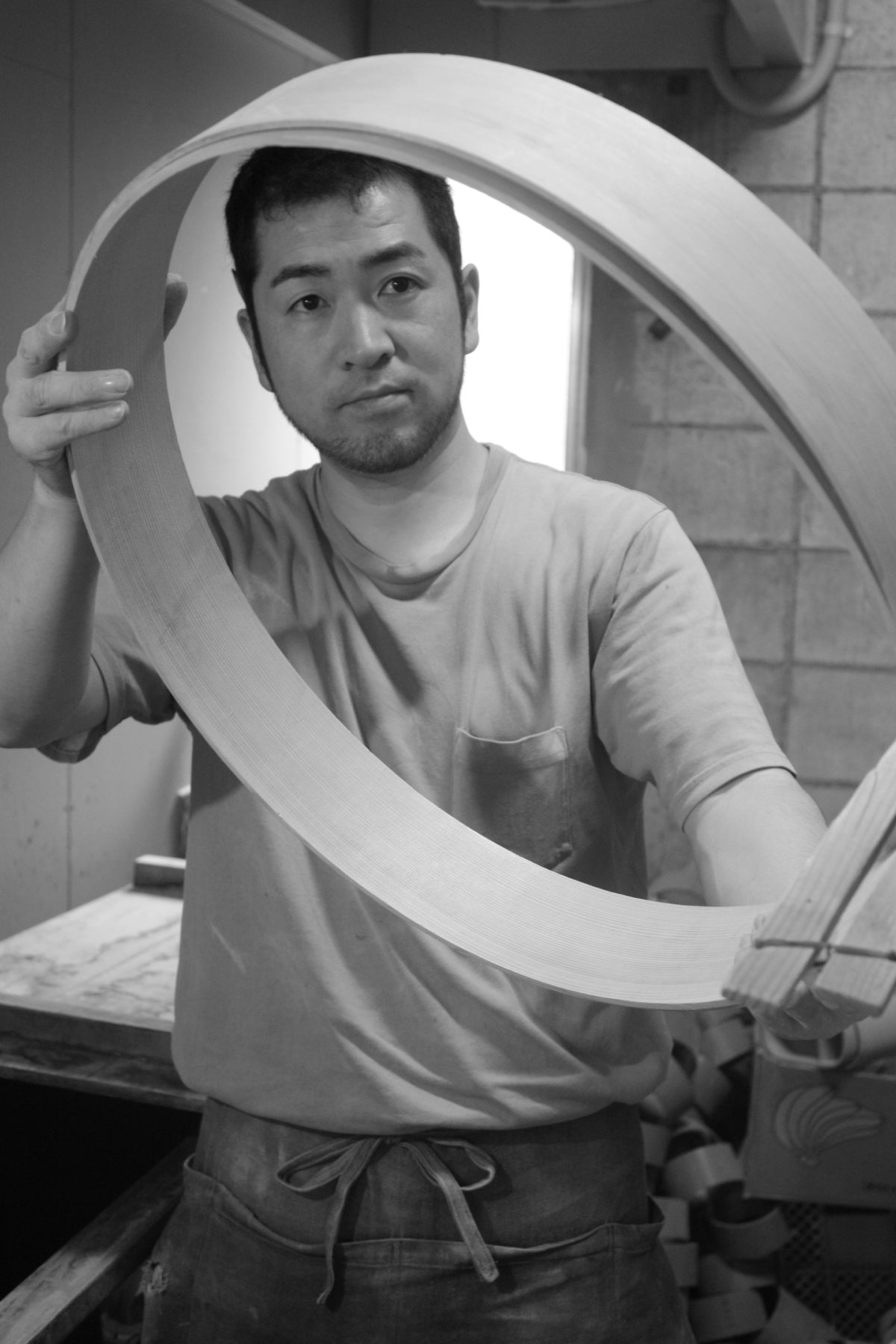
The current owner, Yoshimasa Shibata, created a modern line called “Magewa” with contemporary and sleek plates for bread and a butter-case for the younger generation. Also, he made innovative bento boxes that can stack up; after the food is gone, the design allows the extra boxes to be put back in one stack to be carried home more conveniently and efficiently.
The plain wood symbolizes purity in Japan. When Japanese offers the deities some seasonal food and the products just harvested, we use this type of “shiraki” plainwood at the shrines and home altars.


The cedar from Akita cedar forests is stripped, boiled, bent and tied together with bark from cherry trees. For hundreds of years, wood workers in the region have been known to make bentwood products that are thin, durable and slightly cedar scented.
The creation of magewappa in Japan can be traced back nine centuries. It began as a side-job for low-ranking samurai. It became more of an art and industry over the last 400 years. The knowledge is passed down within a family. It became more necessary to preserve this form of art once the use of metal became more widespread. In 1980, Odate Magewappa became a nationally designated Japanese traditional craft, a local specialty of Akita. This designation will allow preservation for future generations.
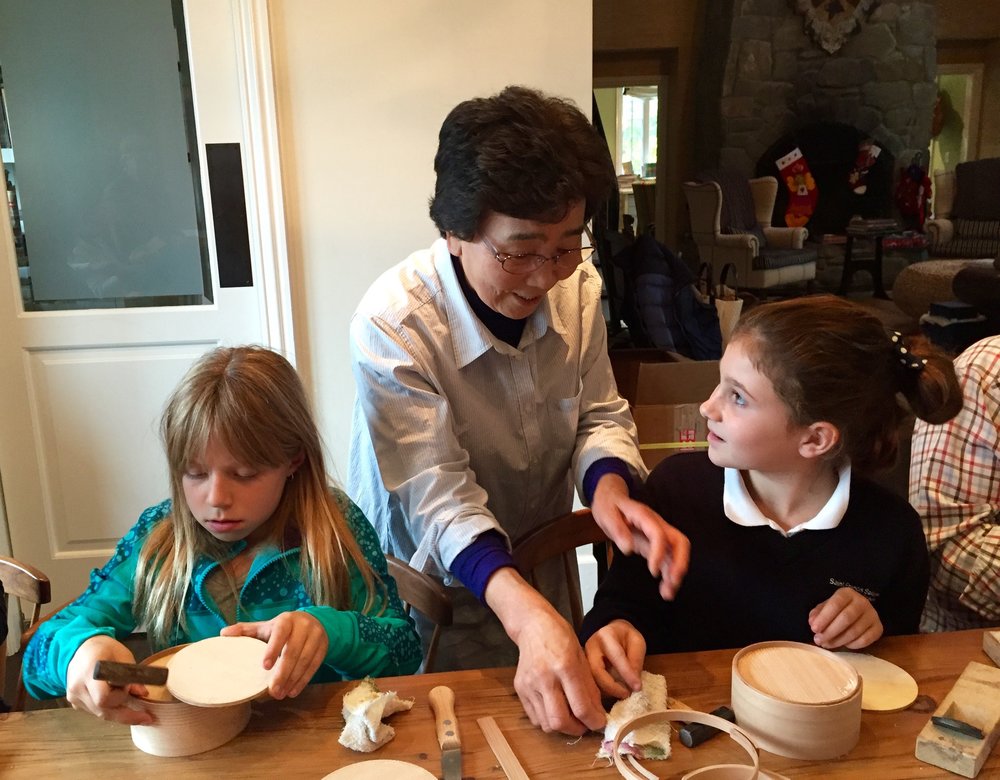
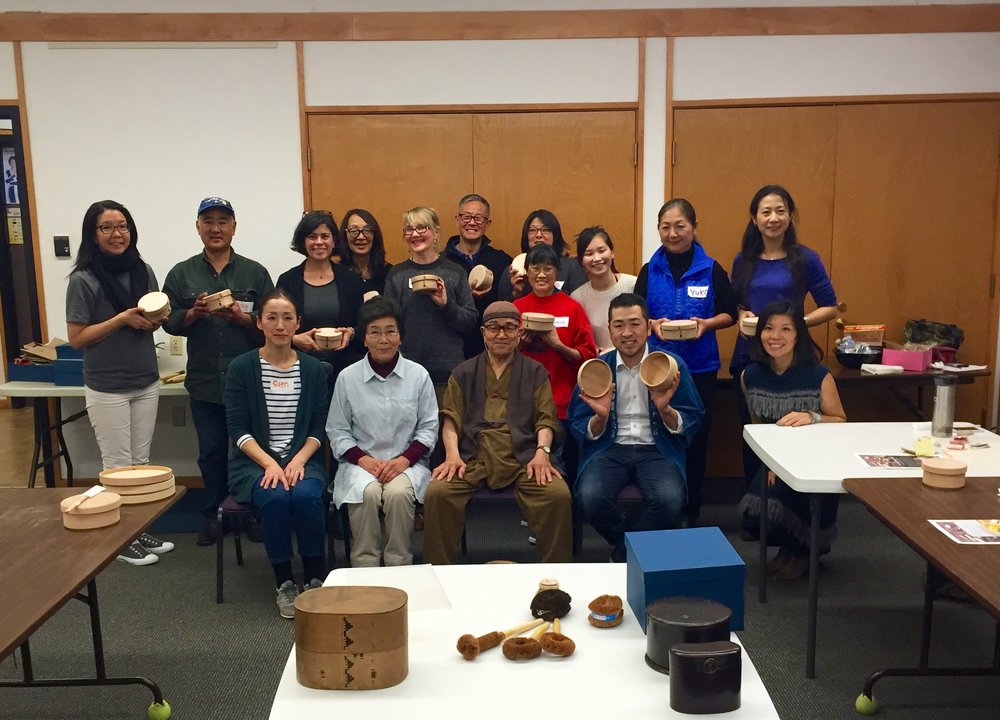
In 2015, we invited Yoshinobu and Yoshimasa offered multiple workshops to make magewappa bento boxes at the Workshop Residence, Izakaya Rintaro and at the Japanese Cultural and Community Center of Northern California in San Francisco. They also held public demonstrations at the local schools and institutions in Sonoma, CA.
